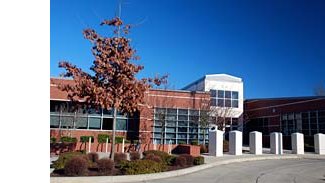Snow, Ice, Avalanche and Blizzards are the most common of Winter's many hazards.
Winter storms are a frequent occurence across the Pacific Northwest. Many of these storms bring snow amounts that cause road closures, especially through the mountain passes. Wind, in combination with the snow, can cause reduced visibility and deep snow drifts. Along with the heavy snow comes an avalanche threat in areas of steep terrain. In valley locations, temperatures may be near freezing during the day, but after the storm passes, temperatures plummet causing wet roadways to become ribbons of black ice. In some valleys, cool air trapped near the surface remains below freezing, while warmer air aloft drops rain through the sub-freezing air, causing glaze ice or freezing rain.
All of these hazards are forecast ahead of time by your local National Weather Service forecast office. Winter storm watches are generally issued 1 to 3 days prior to the storm's arrival. Winter storm warnings, ice storm warnings and heavy snow warnings are issued within a day and sometimes two days's warning.
1) Winter Storm Warning...issued when any combination of freezing rain, sleet, wind and/or heavy snow occurs over an area that is expected to cause significant widespread damage. Snow amounts required for winter storm warnings vary, given the terrain and location. For low lying areas, which normally receive very little snow, only 2 to 4 inches of snow is required for a winter storm warning. On the other hand in mountainous areas, where nearly every storm brings at least 6 inches of snow, 8 to 10 inches (or more) of snow is required for a warning. A winter storm warning means that road crews will have difficulty keeping roads open and snow free, making travel difficult at best, and impossible at worst.
2) Blizzard Warning... is normally associated with severe winter weather in the northern plains where strong northwest winds bring snow and frigid temperatures. While rather common for the plains states, blizzard or near blizzard conditions can occur in the Pacific Northwest. The National Weather Service defines a blizzard as a combination of wind that is 35 mph or stronger accompanied by snow with visibilities frequently below one-quarter of a mile.
3) Ice Storm Warning... in the Pacific Northwest are infrequent, but can be extremely dangerous. Across interior locations, valley locations will have temperatures below freezing when a warm winter storm blows overhead. Rain falling out of the storm passes through the sub-freezing air near the surface and freezes on contact with objects. These conditions cause trees to snap, power lines to fall, and make roads nearly impossible to navigate.
4) Avalanche Warnings...
Avalanche Warnings are issued by the Northwest Avalanche Forecast Center, located in Seattle. These products are issued when there is a significant threat of avalanches in the Cascades and Olympics backcountry, possibly affecting mountain roadways and other high country interests. Also, see the NW Avalanche Center's website.
Thousands of avalanches occur each year in the mountains of the Pacific Northwest. With the popularity of winter sports, avalanches pose a great risk to skiers, hikers and snowmobilers. The risk is very real, as people die each year when sudden avalanches bury them. Avalanches can happen anywhere the slope is steep enough and has a heavy load of snow. They typically occur during or just after snowstorms and most occur on a slope of 30 to 45 degrees. By waiting 36 hours after a big snowstorm, you may allow the snow to settle. If you stay in the valleys away from avalanches chutes, in stands of dense trees, or on gentle slopes, you can minimize your risk to avalanches.
…AVALANCHE SAFETY RULES…
1) NEVER TRAVEL ALONE. Always have one or more companions. If you are alone, and get trapped by an avalanche, you may not be found until April or May.
2) If crossing a slope that may be prone to avalanches, do it one person at a time. You want to minimize the impact on your party if an avalanche occurs.
WHEN WINTER STORMS THREATEN…AVOID TRAVEL IF AT ALL POSSIBLE. ROAD CREWS WORK HARD TO KEEP ROADS OPEN…STUCK CARS ONLY MAKE THEIR JOB HARDER.
Wednesday, October 14, 2009
Subscribe to:
Post Comments (Atom)







No comments:
Post a Comment